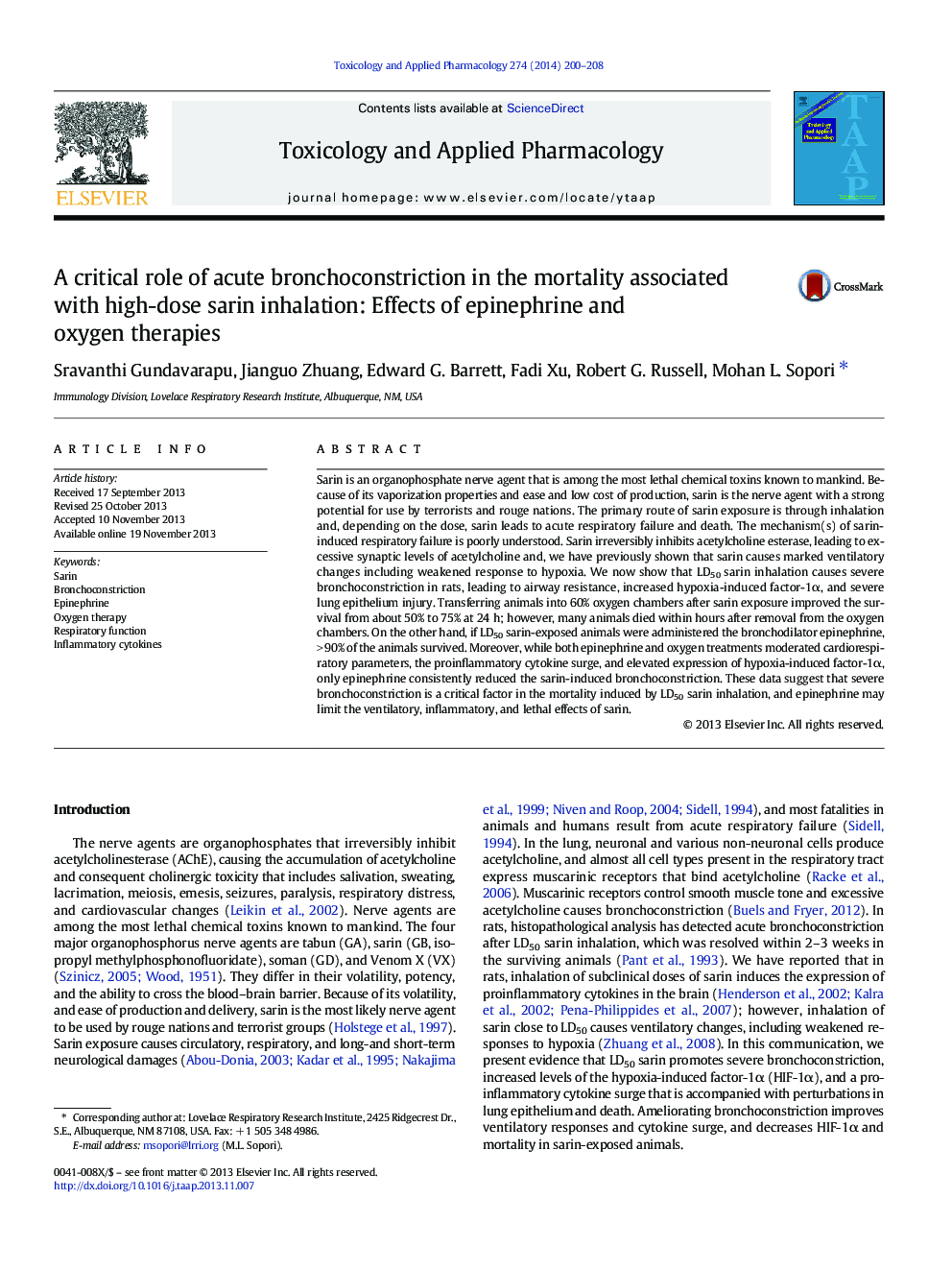| Article ID | Journal | Published Year | Pages | File Type |
|---|---|---|---|---|
| 5846328 | Toxicology and Applied Pharmacology | 2014 | 9 Pages |
Abstract
Sarin is an organophosphate nerve agent that is among the most lethal chemical toxins known to mankind. Because of its vaporization properties and ease and low cost of production, sarin is the nerve agent with a strong potential for use by terrorists and rouge nations. The primary route of sarin exposure is through inhalation and, depending on the dose, sarin leads to acute respiratory failure and death. The mechanism(s) of sarin-induced respiratory failure is poorly understood. Sarin irreversibly inhibits acetylcholine esterase, leading to excessive synaptic levels of acetylcholine and, we have previously shown that sarin causes marked ventilatory changes including weakened response to hypoxia. We now show that LD50 sarin inhalation causes severe bronchoconstriction in rats, leading to airway resistance, increased hypoxia-induced factor-1α, and severe lung epithelium injury. Transferring animals into 60% oxygen chambers after sarin exposure improved the survival from about 50% to 75% at 24 h; however, many animals died within hours after removal from the oxygen chambers. On the other hand, if LD50 sarin-exposed animals were administered the bronchodilator epinephrine, > 90% of the animals survived. Moreover, while both epinephrine and oxygen treatments moderated cardiorespiratory parameters, the proinflammatory cytokine surge, and elevated expression of hypoxia-induced factor-1α, only epinephrine consistently reduced the sarin-induced bronchoconstriction. These data suggest that severe bronchoconstriction is a critical factor in the mortality induced by LD50 sarin inhalation, and epinephrine may limit the ventilatory, inflammatory, and lethal effects of sarin.
Keywords
Related Topics
Life Sciences
Environmental Science
Health, Toxicology and Mutagenesis
Authors
Sravanthi Gundavarapu, Jianguo Zhuang, Edward G. Barrett, Fadi Xu, Robert G. Russell, Mohan L. Sopori,
